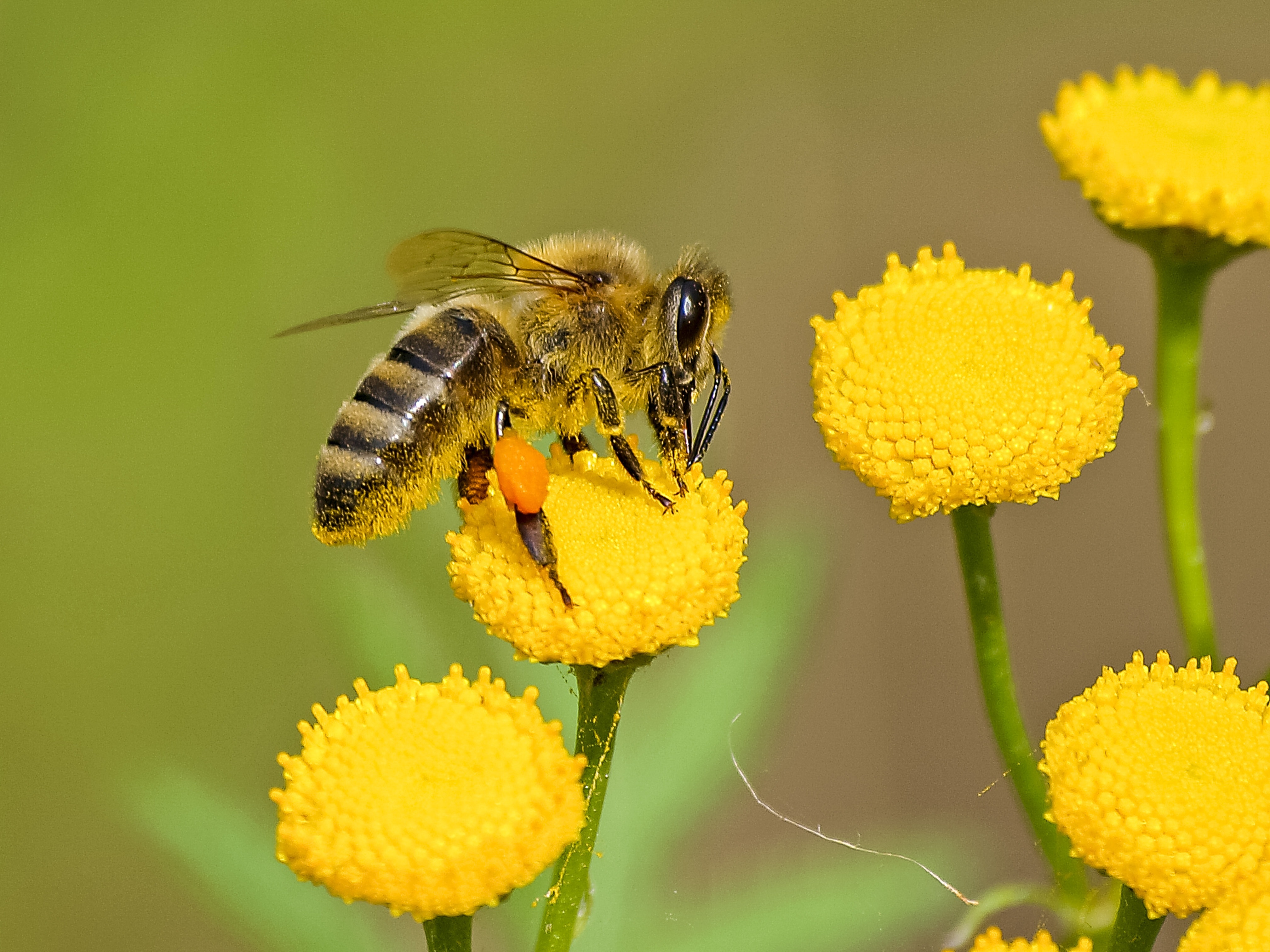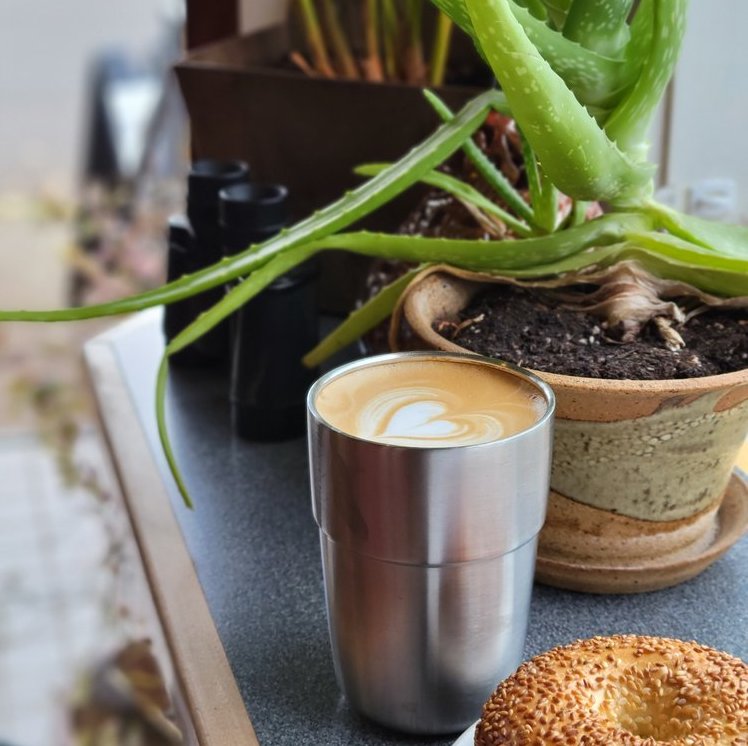
Sustainable Lawns: Getting Back To Our Roots
Traditional lawns are made of a hardy grass called Kentucky bluegrass. While this type of grass can withstand high levels of traffic, it requires a lot of input (whether it be mowing, watering, or weeding)! Compaction in soil prevents water from rain or irrigation from soaking into the soil, which causes storm water runoff, water pooling, and prevents your landscape plants from getting moisture. Compact soil makes it difficult for microbes to live in soil, which negatively affects the plants that need these microbes.
Fertilizers and weed controlling chemicals are not only expensive, but they wash directly off of the super compact soil of traditional lawns into storm drains which directly lead to streams and lakes, causing algae blooms. A statistic from the Environmental Protection Agency claims that running a lawn mower for an hour has equivalent carbon emissions to 8 brand new cars driving 55 miles per hour for the same amount of time. The time and money that we put into watering or maintaining lawns is extremely unnecessary, even if you want a picture perfect landscape.

Incorporating native plantings and grass types into landscapes provide healthy soil that is able to sequester carbon, build healthy soil, and support plants, wildlife and infiltration of water. An analysis from the NASA Ames Research Center indicates that turf grasses, occupying about 2% of the surface of the continental U.S., which makes turf grass the single largest irrigated crop in the country. Bee pollination actually is valued at generating $12 billion annually in the United States, so incorporating pollinator plantings into landscapes is another way that we can help protect the crops we eat every day! Here are the most eco-friendly and attainable landscape changes that I have studied and can truly recommend to everyone.
Fine Fescue Grass
To be honest, fescue grasses are one of my favorite types of grass because they turn mat-like as they grow; forming a soft and relaxing lawn to spend time on. Fescues are able to thrive in full sun to shade depending on the species, and also require no maintenance because they outcompete many weeds. Mowing a few times throughout the season will allow for a shorter and more conventional look. To maintain green through the growing season, the lawn should receive 1” of water per month, compared to 1” water per week for Kentucky bluegrass. Fescue blends are low growing, which equals less mowing. Due to the long root systems of fescue, your soil will absorb more stormwater than traditional and compact lawns, which reduces pollutants entering surrounding lakes, streams, or creeks. Many fescue mixes have 4% blends of pollinator flowers, which makes your landscape an overall eco-friendly and conventional looking lawn!

Pollinator Planting
Pollinator lawns are a low-maintenance landscape option that has been gaining widespread popularity in the past couple of years. Populations of many pollinator species like bees, butterflies, birds, ants, and flies are supported by these landscape types by harvesting pollen and nectar from low growing flowers. The most common pollinator plantings in the Midwest where I live are Dutch white clover, self-heal, and creeping thyme. Pollinators are necessary for healthy ecosystems and for agriculture because there are over 100 crops grown that require or benefit from pollinators in the United States! Pollinator plantings are a great option with a wide variety of seed mix options that thrive in full sun to partial shade. The grass should grow to at least 4 inches to allow blooming of pollinator flowers, and if mowing is desired the grass should never be cut below 3 inches. No additional watering is required after planting, and herbicides and chemical fertilizers should be avoided as they kill pollinators.

Rain Garden
Rain gardens have a greater upfront cost compared to the other low maintenance lawn types due to the variety of native plants and arrangement designs that are out there for every single shade and soil type. No watering is required due to the retaining method of a rain garden, hand weeding is the recommended maintenance, and no mowing is required for a rain garden. The purpose of rain gardens is to store and filter polluted stormwater runoff from impervious surfaces like traditional turf lawns, homes, streets, and parking lots. In addition to installing a rain garden, redirection of rain downspouts or swale beds will also need to be installed on your landscape to ensure maximum water retention in your rain garden

Native Prairie Planting
Native prairies are a great low-maintenance option for areas with full sun and few trees. Prairie landscapes are drought tolerant, only requiring water if there is no rainfall for several weeks. On top of being drought tolerant, prairies do not need any chemical insecticides or fertilizers because these harm germination. These types of landscapes do not support high levels of traffic. If there are weed, hand weeding or natural direct spot treatment (like burning, boiling water, etc) is the best option. They create a healthier, less compact soil, which filters pollutants from rain runoff before entering our groundwater. They provide food for birds, bees, butterflies and beetles! Some of my favorite native prairie plants to consider in a landscape include large beardtongue, prairie blazing star, little bluestem, and prairie dropseed. Prairie landscapes do require often mowing during the first 3 years of establishment but after that you only need to mow the prairie once per season during early spring.

Landscaping tips
If landscape change is not in the immediate future for you, you can still conserve money and the environment with your lawn care:
● Invest in a smart irrigation system that only waters your property when there has not been enough rainfall to maintain a healthy lawn. An example is the Rachio control, which connects to your phone and local weather stations to ensure proper watering during every season.
● Do not mow your turf grass below 3” to maintain healthy root systems that will retain water and keep grass looking green.
● Even planting one pollinator plant provides a “pollinator corridor”, which ensures that our bees and butterflies have sufficient nutrients along their path across our community.
● Try gardening chemical free- we have an article here: https://www.cuthecrap.org/post/making-chemical-free-gardens-the-norm-again
There are many more different sustainable lawn types, but these are a few of the most affordable and attainable landscaping changes anyone can make! As always, message us with any questions! I both am studying this topic for my degree, as well as for my current water conservation job so I have a lot of information and passion to share with anyone who wants it. 🙂 -Zöe


